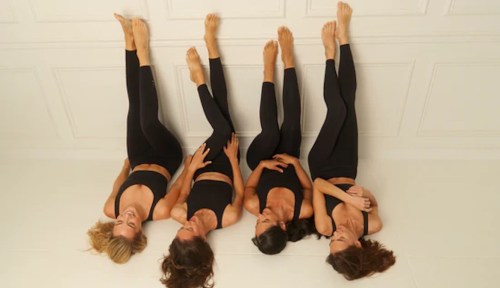Our editors independently select these products. Making a purchase through our links may earn Well+Good a commission
Thanks to the rise of at-home spin workouts, it’s never been easier to recreate your favorite cycling class in the corner of your living room. But first things first: You need to pick out an at-home spin bike. There are hundreds of them to choose from (on Amazon alone, there are move than 500 different options with prices ranging from $175 to $6,000-plus), which can make selecting one a daunting task. Don’t you worry, though, we found the best at home spin bikes around.
There are a few things to think about before investing in an at-home spin bike of your own. To find out how to navigate making a selection, we asked pro spin instructor and RYDE coach James Beggan to spill on everything you need to know before you buy, plus the bikes he swears by at every price point.
Things to consider when buying an at-home spin bike
1. Resistance
There are two different types of resistance you can choose from. Most studios opt for magnetic resistance, which Beggan says “offers more nuances for resistance levels so you can really find the perfect spot for your fitness level.” The heavier resistance on these bikes doesn’t push back on your joints, so they’re generally more comfortable, particularly if you’re prone to knee pain. The other option is physical or “felt pad” resistance, which tends to have a lower price point, but requires more maintenance and offers fewer levels for your ride.
2. Drive
Back in the day, you could generally only find at-home bikes that relied on chains to get them going, which tend to come at a lower price point. These give you a similar feel to riding outside, but they make it harder to hit a faster pace. Now, belt-driven bikes (which have become the studio standard) offer a smoother experience, require less maintenance, and last longer. If you like the feel of the road as you pedal, some belt bikes (including all of the ones in the bikes below) have more texture than others to provide a more authentic experience.
3. Frame
When choosing a bike, you can either opt for an aluminum frame, which is less maintenance and is lightweight, or a steel one, which comes at a lower cost but is heavy and can rust over time.
4. Pedals
It’s important to know that all at-home spin bikes come with changeable pedals, which means that if you love a bike but want a different option for your feet, you can buy pedals separately and swap them out. There are sneaker pedals, which are basically what you had on your bike as a kid, dual cage SPD pedals, which have a cage on one side for sneakers and a spot to clip-in spin shoes on the other, and triple link pedals, which offer a clip-in only.
The best at-home spin bikes at every price
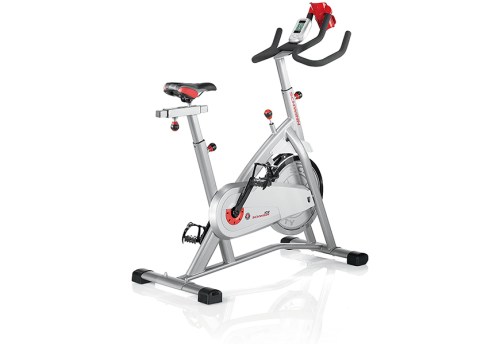
Schwinn IC3 — $650.00
This basic bike will give you as close to an in-class experience as possible for just over $600. It’s got a lighter flywheel, which means it offers fewer resistance options for advanced riders, and the handlebars aren’t quite as ergonomically friendly as those on the more expensive bikes. While it does come with a monitor, it doesn’t give you a whole lot of data about your ride, but it will help you track your RPMs as you spin.
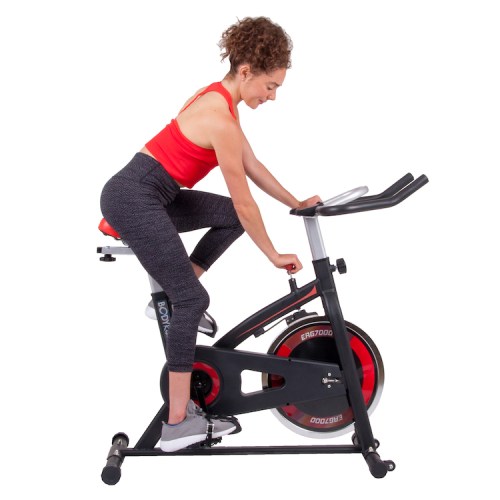
Body Rider Pro Cycle Trainer Upright Bike — $210.00
This spin bike is among the best deals on the market. The 40-pound cycle rides super smoothly and you won’t even need clip-in shoes. “My husband and I were looking for a stationary bike to get us through quarantine, but couldn’t stomach breaking the bank for a pricier model before we knew how much we’d use it. Turns out, we’ve both used it every single day since I wedged it into the corner of our bedroom,” says executive editor Abbey Stone. “Paired with the fitness app of your choice, I’m flabbergasted to how close to the studio experience you can get—with a bit of imagination, of course—for a quarter of what the bigger-name brands will run you.”
Whether Pickleball Is Your Entire Personality or You’re an Eager Newbie, Snag These 5 Essentials to Up Your Game
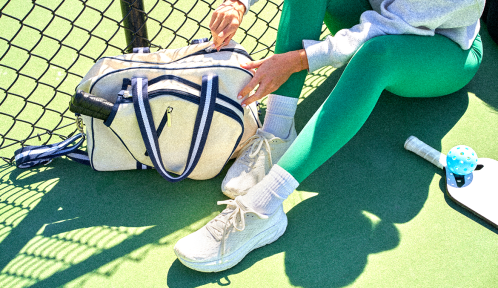
Run Smarter, Not Harder: Nike’s Running Shoe Finder Takes the Guesswork Out of Choosing Sneakers

Flares! Wide-Legs! Cargos! Here Are 5 Nike Pairs to Help You Celebrate the Active-Pants Renaissance


Echelon Connect EX-1 LE Bike — $800.00
This bike comes with a built-in screen that allows you to stream more than 30 classes, offers 32 levels of resistance, and has ergonomically correct handlebars and adjustable pedals for an ultra-comfortable ride. At 105 pounds, it’s still fairly lightweight, and has clip-in pedals and a spot to hold your weights and water bottle.

Stryde — $1,550.00
A $30-per month membership gets you this super connected bike that brings classes from the top spinning studios around the country into your living room. The magnetic resistance of the bike makes for a super smooth ride, and because the bike comes equipped with a screen, you can easily stay connected as you sweat it out from your living room.
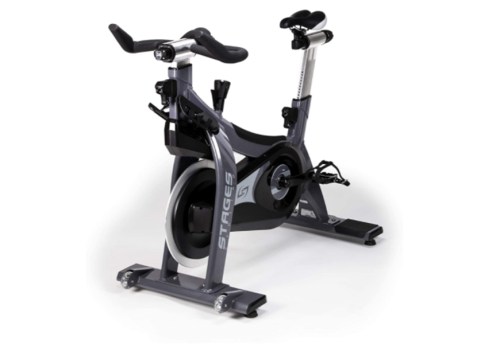
Stages SC2 — $2,000.00
For something that will make you feel like you’re back on a bike in your favorite brick and mortar, go for this option, which you might actually recognize from your studio (it’s used at many hotspots around NYC). It’s highly customizable and secure, has a low-maintenance belt drive and is powered by magnetic resistance, and has a lightweight aluminum body that won’t rust. It’s even got a spot for your weights and your iPad, so you can get the full studio experience.

Peloton — $1,895.00
Peloton changed the game when it released it’s all-in-one at-home spin bike, and there’s a reason why it’s continued to reign supreme. It’s got a built-in screen where you can stream thousands of live and on-demand classes, and though it’s an investment, Peloton does offer a monthly payment plan to make it feel more affordable. You’ll need to use spin shoes with it, but the brand makes it easy to order a pair along with your bike. You’ll have to pay an extra $39 a month for a class subscription, and while the bike is ultra-modern, Beggan notes that it’s not one of the most ergonomically friendly on the market.

SoulCycle — $2,500.00
SoulCycle’s brand-new at-home bike offers the best-of-the-best quality classes out there, and is truly the closest you can get to an in-studio experience at home. You’ll have to pay an extra $40 a month for a subscription to the Variis app in order to view them, but this will give you access to all sorts of different workouts from across Equinox (including HIIT, yoga, and stretching) as well as a five-pack of classes you can use in SoulCycle studios. The bike is still currently only available for pre-order, but is expected to be available later this year.
Sign Up for Our Daily Newsletter
Get all the latest in wellness, trends, food, fitness, beauty, and more delivered right to your inbox.
Got it, you've been added to our email list.

